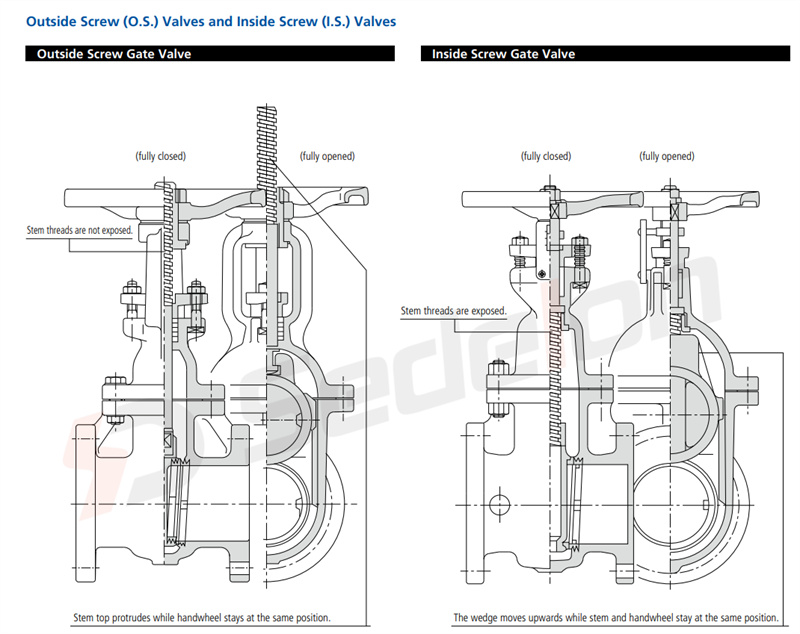1.In a rising stem gate valve, the stem moves up and down as the valve is opened or closed. When the valve is opened, the handwheel is turned, causing the threaded stem to rise. As the stem rises, it lifts the wedge, allowing fluid to flow through the valve.
In a non-rising stem gate valve, the stem does not move up and down as the valve is operated. Instead, the stem is threaded into the wedge, by rotating the stem at a fixed point, it drives the wedge to move up or down to complete the opening and closing process.
2. The stem thread of the non-rising stem gate valve is located inside the valve body. During the opening and closing process of the valve, the stem only rotates in place, making it impossible to determine the valve's opening and closing status with the naked eye. The stem thread of the rising stem gate valve is exposed outside the body, which can visually determine the opening and closing position of the wedge.
3.The valve stem of the rising stem gate valve is located outside the body, which facilitates maintenance and lubrication. The thread of the non-rising stem gate valve stem is located inside the body, making maintenance and lubrication difficult. Additionally, the stem comes into direct contact with the medium and is susceptible to medium erosion, and the valve is easily damaged.

 English
English España
España







